| Botanical Name |
|
| Family |
Rutaceae - The rue, buchu & citrus family. |
| Pronunciation |
zan-tho-ZY-lum ka-PEN-see |
| Common Name(s) |
English: Small knobwood; Lemon thorn
Afrikaans: Kleinperdepram; Lemoendoring
IsiXhosa: isifutho; umnungwamabele
IsiZulu: Amabelentombi; Umhlungumabele
Sesotho: Monokwane; Senokomaropa
Setswana: Monokomabêlê; Sekole
Tshivenda: Munungu; Murandela
|
| Plant Group |
- Tree A woody, self-supporting perennial plant usually with a single main stem and generally growing more than 6 meters tall.
|
| Plant Size |
- Small
| Tree | 4m to 8m |
| Shrub | 50cm to 75cm |
| Perennial/ground cover | 10cm to 20cm |
| Bulb | 20cm to 30cm |
| Succulent | 10cm to 20cm |
|
| Position |
- Canopy Shade Canopy shade is found below closely grown trees where some light filters through. Ideal for the protection of herbaceous plants.
- Dry Shade Shady areas where soil has poor water retention or are dependent on rain for their moisture needs.
- Light or Dappled Shade Found below trees with sparse, open foliage. Ideal for the protection of herbaceous plants.
- Partial Shade The area is in shade for part of the day and in full sun for part of the day.
- Sun The area is in full sun for all or most of the day, all year round.
|
| General Information |
- Drought Tolerance: High The plant is well adapted to arid conditions; it can survive long periods of drought and high temperatures without extra water.
- Evergreen Plants that have leaves all year round.
- Fragrant / Aromatic These plants posses a strong, usually pleasant odour.
- Frost: Hardy The plant can withstand freezing temperatures or frost without artificial protection.
- Roots Non-invasive Safe to plant near pools, paving, walls or buildings.
- Water Wise Plant species originating from low rainfall regions that require less water to survive and thrive than other plant species.
|
| Specific Information |
Zanthoxylum capense is a small tee with small, glossy leaves that have a lemony smell when crushed. The bark of the trunk is armed with cone-shaped knobs with short spines. The branches and stems carry a multitude of long, sharp thorns, reminiscent of those on a rosebush. A good bonsai subject, particularly for the beginner. Also useful as part of a barrier hedge.
|
| Ad Break |
|
| Flowers |
| Description |
|
| Season |
- Summer Plants will seldom bloom for the entire season as given in the list, but should flower during a period within these parameters.
|
| Colour |
|
| Growth Rate |
- Moderate to Fast Specifying growth rate can be very misleading as there is considerable variation of growth rate depending on type and species of plant, available water, supplementary feeding, mulching and general care, as well as the plants suitability and adaptability to the garden environment.
|
| Plant Uses |
- Attracts bees, butterflies or other insects This plant attracts insects which can be food for birds or other creatures in your garden.
- Attracts Birds This plant will attract birds.
- Barrier Plant A very thorny shrub, tree or scrambler that can be used to create an impenetrable barrier.
- Boundary A plant useful for planting around the edges of the property to form a green or colourful backdrop, an impenetrable hedge, to hide walls or create privacy.
- Container Trees, shrubs and ornamental species that can adapt to growing in a restricted environment.
- Filler Either a fast growing tree or shrub used temporarily to fill in an area while the permanent plants grow to a desired size, or a plant used to fill gaps in borders or beds.
- Hedge Suitable trees or shrubs planted relatively close together so that the branches intertwine to create a barrier. This can be formal – the plants are regularly trimmed to produce a neat shape, or informal – the plants are left to themselves to create a natural hedgerow.
- Provides light / dappled shade A tree with an open to sparse canopy, through which varying degrees of sunlight can penetrate.
- Rock Garden An area constructed of larger rocks, arranged naturally, to emphasise the use of stones as a main element. Generally plants used do not need a lot of care.
- Suitable for bonsai A shrub or tree that lends itself to being dwarfed.
- Suitable for coastal gardens Plants adapted to dry, sandy soil, forceful wind, limited rainfall and intense sunlight.
- Suitable for smaller gardens Such plants do not have invasive root systems, remain small or controllable and can often be grown in containers.
- Wild Garden An indigenous garden planted for the benefit of wildlife and birds. Provides food, water, a variety of mini-biomes and no poisonous chemicals are used.
|
| Distribution and Habitat |
from George in the Western Cape, through the Eastern Cape, KwaZulu-Natal and Mpumalanga, to Limpopo, North West and Gauteng, in dry woodland or bush, often in rocky places
|
| Planting Suggestions |
|
| Medicinal Uses |
The fruit is used to treat colic, flatulence and palsy. Peeled twigs are beaten flat to make effective toothbrushes. Other uses of the plant are as a remedy for snakebite, as a treatment for colds, as a mouthwash, to relieve toothache and for gastric and intestinal disorders.
|
| Ad Break |
|


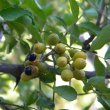
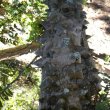
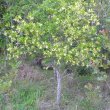
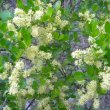
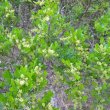
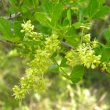
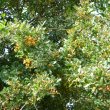
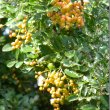
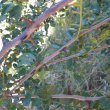


Comments
Zanthoxylum miniture (Bonsai)
Bought 3 weeks ago suddenly leaves are dropping plenty of new growth watered frequently when needed kept on bright windowsill no direct sunlight your comments would be appreciated
Xanthoxylum Bonsai
Let me state at the beginning that I have only a smattering of knowledge about Bonsai, so going according to the behaviour of the Lemon Thorn plants in my nursery, it sounds as though your plant is doing fine. New growth invariably indicates good health. I have noticed that they do lose quite a lot of leaves at certain times of the year - in very dry weather and around fall/autumn - but new leaves appear quite soon. It could also be from a sudden change in living quarters. The change in air, temperature, water, light and humidity are things the plant has to adapt to and this takes a little time.
If you are still worried don't hesitate to get hold of a bonsai site where you can get expert advice.
Hope all goes well with your little tree.
Lorraine
Discuss this plant
Share knowledge, ask a question or give an experience.